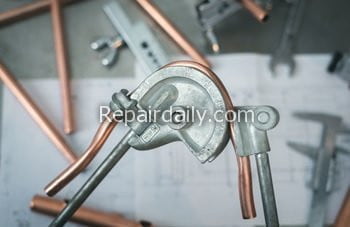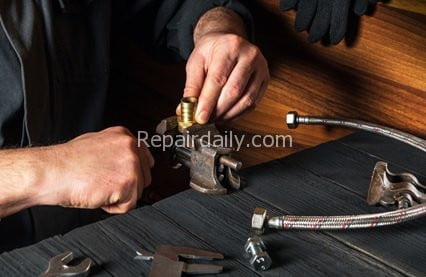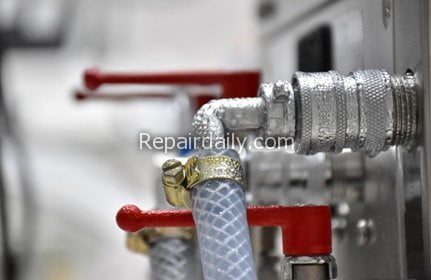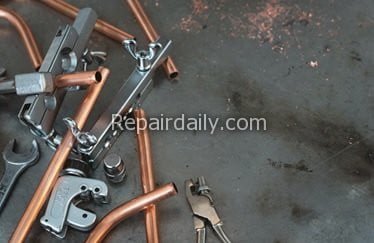
When it comes to bending brass tubing, there are a few things you need to know to get the best results. In this article, we will go over the steps involved in bending brass tubing and some of the factors that can affect the process. We’ll also provide a few tips for getting the most out of your bends.
So, whether you’re starting from scratch or just looking to improve your techniques, read on for all you need to know about bending brass tubing.
Apply Pressure to the Brass Tubing with a Brass Tube Bender

Brass tubing is a versatile material used for various applications, from plumbing to musical instruments. Brass tubing is also relatively easy to bend, making it a good choice for projects that require custom shapes or curves.
However, bending brass tubing correctly requires a brass tube bender. This specialized tool applies pressure to the tubing, slowly bending it into the desired shape. Brass tube benders are available in various sizes, so it’s important to choose one that will work with the diameter of your brass tubing.
With the help of a Brass tube bender, you can easily create custom shapes and curves from brass tubing.
Place the Brass Tubing in a Vise

Before bending the brass tubing, it is important to secure it in a vise. This will help prevent the tubing from slipping and damaging during the bending process. Once the tubing is in place, use a hammer or an ice pick to make a small indentation at the point where you want the bend to start.
This will help to create a clean, sharp edge when you make the bend. Then, use a pipe bender or a similar tool to slowly and carefully curve the brass tubing. Make sure to go slowly and evenly, or else the tubing may crack. Once you have reached the desired shape, remove the tubing from the vise and allow it to cool before moving on to the next step.
Heat the Brass Tubing with a Torch Until It is Glowing Red

When you are ready to bend the brass tubing, heat it with a torch until it is glowing red. Apply the heat evenly along the length of the tubing that you will be bending. Do not overheat the tubing in one spot, or you will risk weakening or breaking the metal.
Once the brass is glowing red, you can start to bend it using a variety of methods. For example, you can use a jig to hold the tubing in place while you apply pressure with your hands, or you can use a pipe bender if you need to make more precise bends.
With a little practice, you’ll be able to create beautiful, professionally-looking projects using brass tubing.
Continue Heating the Brass Tubing with the Torch as You Bend It to Avoid Cracking

You’ve heated the brass tubing with a torch, and now it’s time to bend it into shape. But before you do, there’s something important you need to keep in mind: if you don’t continue heating the brass tubing as you bend it, there’s a good chance it will crack.
This is because brass is a metal that becomes brittle when it cools. So, if you bend the tubing while it’s cool, the stress of the bending could cause it to crack. However, if you keep the tubing heated as you bend it, the metal will remain pliable and much less likely to crack.
So, if you want to avoid cracking the brass tubing, be sure to keep it heated as you work.
Cool the Brass Tubing in Water Once You Have Achieved the Desired Shape

To prevent the brass tubing from becoming misshapen, it is important to cool it in water once you have achieved the desired shape. This will help to set the shape of the tubing so that it retains its shape when it is removed from the water.
If the brass tubing is not cooled properly, it can lose its shape and become difficult to work with. When cooling the brass tubing in water, be sure to use cool water, not cold water. Cold water can cause the brass tubing to crack or break.
Once the brass tubing has cooled, it can be removed from the water and used as desired.
Few Tips for Getting the Most Out of Your Bends

When it comes to working with brass tubing, there are a few things you can do to ensure that you get the most out of your bends.
- First, be sure to use a high-quality bending die. This will help to reduce friction and prevent the tubing from sticking or collapsing.
- Second, take care not to over-bend the tubing. This can cause the walls to thin out, making the tubing more likely to kink or break.
- Finally, use a good quality lubricant when bending the tubing. This will help to reduce friction and protect the tubing from scratches or other damage.
By following these simple tips, you can ensure that your brass tubing bends are as smooth and precise as possible.
In a Nutshell
In conclusion, bending brass tubing is a relatively simple process that can be accomplished with a few basic tools. By following the steps outlined in this article, you should be able to create bends of various shapes and sizes in your brass tubing. Have fun experimenting with different shapes and sizes.
